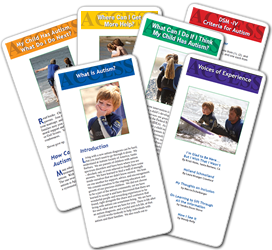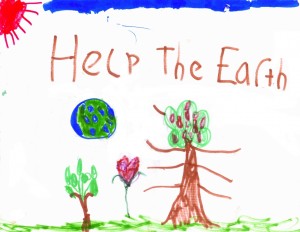 There is no one-size-fits-all treatment or approach to the developmental disability, but help is available.
There is no one-size-fits-all treatment or approach to the developmental disability, but help is available.
In honor of April’s celebration of Autism Awareness Month, the Santa Barbara chapter of the Autism Society of America (ASASB) (www.asasb.org) has released a new guidebook for parents. Spearheaded by board president Marcia Eichelberger and vice president Sandy Shove, “Autism and Your Child: A Guidebook for Parents,” offers a concise package of valuable information for parents of children who have just been diagnosed with Autism.
Autism is a complex developmental disability that typically appears during the first three years of life. The result of a neurological disorder that affects the functioning of the brain, autism impacts the normal development of the brain in the areas of social interaction and communication skills. Children and adults with autism typically have difficulties in verbal and non-verbal communication, social interactions, and leisure or play activities.
According to data from the ASASB, ten Years ago, one in 10,000 individuals had Autism. Two years ago, one in 500 individuals had Autism and last year one in 250 Individuals had Autism. Today it is believed that 1 in 150 individuals have Autism. The overall incidence of Autism is consistent around the globe, but is four times more prevalent in boys than girls. Autism knows no racial, ethnic, or social boundaries, and family income, life, and educational levels do not affect the chance of Autism’s occurrence.
Despite the growing prevalence of Autism, there are a wide variety of strategies and treatments being used with varying degrees of success. There is no one-size-fits-all treatment or approach, which makes it especially difficult for parents to access the information they need to help their children.
“I often tell people, ‘if you know one person with Autism, that means you know one person with Autism,'” says Shove, explaining that therapies and treatments that work for one person won’t necessarily work for another.
Part of the motivation for putting together the guidebook was their own extremely frustrating firsthand experience wading their way through the maze of information.
“When Sandy and I, when our children were diagnosed–mine was diagnosed about 12 years ago and Sandy’s was diagnosed about 8 years ago–there was nothing available for the doctor to even hand to us. There was no website, there was no support group, there was nothing,” says Eichelberger.
The guidebook is the result of many years of work “compiling resources, securing grant funding, participating in county-wide and tri-county inter-agency meetings, and inviting input from parents and professionals alike,” Eichelberger says. “We are particularly proud that it is available in both English and Spanish, and is available in both hard copy and on our website.”
In addition to publishing the guidebook–which includes sections explaining what Autism is, the diagnostic criteria, what to do if you think your child has Autism, where to go to get more help, and a particularly moving section called “Voices of Experience,” with parents sharing their personal stories–ASASB recently started its first auxiliary chapter in north county.
In honor of Autism Awareness Month, ASASB is co-sponsoring the Cambridge Center Conference on Autism: Evidence Based Practices on Friday, April 25th at the Santa Ynez Valley Marriott in Buellton. “We’ve had an amazing response to the conference,” says Shove.
“This is a remarkable opportunity for local parents and professionals to hear first-hand from international experts in the field of Applied Behavioral Analysis,” says Eichelberger. The conference covers a wide range of topics designed to help parents, teachers and caregivers of people with Autism.
Keynote speakers include: Andrew Bondy, Ph.D., BCBA, on “Teaching the Language of Emotions to Children with Autism;” Gina Green, Ph.D., BCBA, on “Evidence-Based Practice: What is it and Why is Everybody Talking About it;” Rob Holdsambeck, Ph.D., BCBA, and Hank Pennypacker, Ph.D., on “Adding Precision to Measurement and Reality to Predictions in Treatments of Persons with Autism;” Jane Howard, Ph.D., BCBA, on “Improving the Social and Communication Skills of Children with Autism Using the Science of Behavior Analysis;” and Janet Twyman, Ph.D., BCBA, on “Early Literacy Instruction for Learners with Autism Spectrum Disorders.” (www.behavior.org)
=
Additional Information About Autism
If you think your child might be Autistic:
∑ First check out the list of typical childhood development milestones. (http://www.asasb.org/Milestones.cfm) If it turns out that your child does have developmental delays, early intervention services are your greatest gift to your child, because most major research on learning concludes that intervention before age five has the greatest chance of reducing/eliminating developmental delays–including Autism.
What are some of the common concerns that parents have for kids that eventually get diagnosed with some form of Autism?
∑ The most common concerns expressed by parents to pediatricians prior to the diagnosis of autism are:
1. Lack of speech and/or had words and lost them.
2. Child seems deaf.
3. Child does not make eye contact with parent/caregiver.
4. Child has unusual, odd behaviors including severe tantrums, self-injurious behavior, is difficult to control, engages in self-stimulatory behaviors (flapping, rocking, spinning, etc.).
5. Child ignores or does not play with other children.
There are great differences among people with autism.
∑ Some individuals may exhibit only mild language delays, while others may have no functional speech. Regardless of language skills, social interactions are typically a challenge for most individuals with autism. They may have average or above average verbal, memory, or spatial skills, yet find it difficult to be imaginative or join in a game of softball with their friends. Others more severely affected may need greater assistance in handling day-to-day activities like crossing the street or making a purchase.
∑ Contrary to common belief, many children and adults with autism will make eye contact, show affection, smile, laugh, and express a variety of other emotions, though perhaps in varying degrees. Like others, they respond to their environment in positive and negative ways. The autism may affect their range of responses and make it more difficult to control how their bodies and minds react.
∑ People with autism live normal lives and some of the behaviors associated with autism may change or disappear over time.
“The parent to parent connection is really critical,” says Shove.
∑ One of the most important services offered by ASASB are support groups.
∑ There is no pressure to share any more of your personal story than you want to with anyone.
∑ Our speakers come to share information. Follow-up questions and answer time is available and time to chat with others, but you can leave at your convenience.
∑ There is also an online listserve for parents of children with autism SBATA@yahoogroups.com. To join send an email to info@asasb.org.
–Source: Autism Society of America, Santa Barbara







